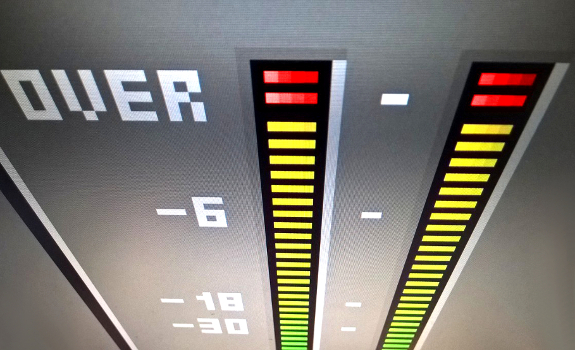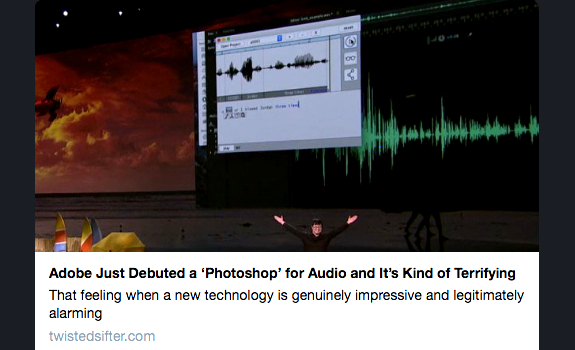While looking forward to 2017, we’re looking back at ’16 – counting down Radio))) ILOVEIT’s 10 most popular posts of this year, according to you!
We enjoy creating this website for you, and we enjoy receiving meaningful feedback from you! Let us know which topics you like to learn about more, and we will ‘let it snow’ with everything you love to read this winter. For now, treat yourself with some hot chocolate (with cream on top), drop on your couch, and enjoy these Recurrents — both free and Premium articles that received the most visits & likes, and/or the coolest comments. Here we go!
‘Not over-processed sound has a positive impact on TSL’

Your on-air sound should first and foremost please your listeners (image: Web Audio Tech)
10. HOW TO SCHEDULE RADIO PERSONALITIES & SHOWS
Premium | Your station may have the best radio personalities & shows, strategically positioning them in your on-air schedule is almost as important.
‘Personally, I believe if professionals practiced what’s posted here, all stations would perform better.’ Wow. Could it get any better? We received this motivating comment at the beginning of 2016, so we were off to a great start! This post covers how to build good talent & content line-up for your station that makes your on-air personalities shine and make your programming strategy work. Read more Premium
9. AUDITORIUM MUSIC TEST ANALYSIS IS NOT ‘ONE SIZE FITS ALL’
While there are ground rules, implementing auditorium music test results still relies on your radio experience (and depends on your programming strategy).
There’s a lot of mystery around music research, so we uncover (what is often seen as) the dark arts of programming. How to keep track of your audience’s content needs and music taste the right way? In this exclusive guest post for Radio))) ILOVEIT, research expert Stephen Ryan explains how to make correct programming decisions based on accurate research interpretations of an auditorium music test. Read more
8. HOW TO GIVE YOUR STATION AN AMAZING ON-AIR SOUND (PT. 7)
Loudness wars may be over between radio stations (in some markets); they go on in the music industry. Should we always ‘undo’ clipping, and if so, how?
Two radio consultants replied to this post. One confirms that ‘it’s all about the listener’s pleasure’, and another says based on research that ‘not over-processed / over-compressed / extreme loud sound has a positive impact on TSL’. This interview with Optimod father Bob Orban covers ways to make your station sound as bright and as clear as possible, and how to eliminate clipping distortion from over-compressed recordings outside of your processor. Read more
‘Consistency in levels and frequencies should be the #1 priority’

Only once your sound is good, you want to try and achieve more loudness (image: Thomas Giger)
7. HOW TO RULE THE RATINGS AS A RADIO PERSONALITY (PT. 2)
Premium | How to become a radio personality instead of a radio presenter? Be who you are, but first: know who you are. Find out, and then fine-tune, your profile.
‘This is good reading for me!’, says a female member of our audience in a reply. ‘I am starting my career kind of late in life – I am 61 years old, but I have a young heart. I know I will do well, because I love what I do!’ We fully agree. Passion will aways make the difference, but if you haven’t accumulated that much life experience yet, this article could help you discover & define your own, recognisable trademark. Read more Premium
6. HOW TO MAKE YOUR TOP 40 RADIO STATION A MASSIVE HIT (PT. 4)
While current hits are their first reason to tune in, listeners of your CHR station probably want more than a repetitive Top 40 format.
An interview with music programming expert Robert Johansson resulted in a music scheduling series for Top 40 radio. Topic of this article is how to build a positive music image, where listeners hear a lot of songs they’re passionate about, while offering enough music variety. ‘Great series! Platooning is very effective if you are aware what your competitors are doing with those songs’, was a radio consultant’s comment. Read more
5. HOW TO GIVE YOUR STATION AN AMAZING ON-AIR SOUND (PT. 8)
What happens inside the ‘black box’? Audio processing explained, from the very basics to best practices, in an interview with Omnia’s Frank Foti.
Our audio processing interviews with on-air sound experts has become one of our most popular series. I’m happy about that because it makes this specialist topic approachable for less-technical presenters and programmers. In reply, a sound engineer wrote us that ‘consistency in levels and frequencies should be the #1 priority. Then work on loudness. Make it easy and fun to listen to. If you can crank it, great. If not, don’t’. We think that’s very true. Read more
VoCo looks fearful, but also seems useful

We might want to think carefully about where to draw the line (image: Twitter / Twisted Shifter)
4. FORMAT X-RAY 1C: CHR MUSIC SCHEDULING ANALYSIS
Premium | Balance in both category exposure and category sequence will help you create radio music format clocks that reinforce your music strategy.
Format X-Ray, where we take a ‘radiograph’ of a major-market station’s programming based on airchecks, is part of the Premium Member program that we introduced in 2016. Even though it’s ‘eyes only’ content, Google sees everything :-). Therefore, this format analysis of a Top 40 station with bonus downloads still got nice visitor numbers from radio professionals looking to optimise song segues, category flow and format clocks. Read more Premium
3. [VIDEO] TEN MINUTE MASTERCLASS: THE FIVE STAR HOUR
How to make every hour count for your station or show? The Five Star Hour can be a useful tool, as radio consultant Francis Currie explains in this video.
We already had articles with visuals, audio, and sometimes an embedded YouTube video, but this year we’ve started with dedicated video, especially for Radio))) ILOVEIT. Francis explains a concept that could help radio personalities, producers & programmers (in any market on any station with any format) to put more engaging content on air. The video got a good amount of views, so it was a nice first experiment. We want to do more of this in 2017. See video
2. #VOCO FOR RADIO: REVOLUTIONARY TOOL OR COMPLETE #NOGO?
Photoshop for speech is becoming a reality with Adobe Audition’s VoCo plugin. What are the implications (and possibilities) for radio broadcasting?
‘A bit unnerving when you consider the possibilities’ and ‘The commentary was excellent’, two readers emailed us in reply to our interview with Sandra Müller, co-founder of the German fair radio initiative for authentic radio broadcasting. VoCo looks fearful, but also seems useful in certain ways. The question is if and how radio professionals could deal with these paradox technologies in a responsible manner. Read more
Follow (and sometimes legally bend) the rules

Stations in quota markets like France and Canada have to be creative (images: Columbia, Wikipedia)
1. (DON’T) FACE THE MUSIC: MUSIC VARIETY DESPITE GENRE QUOTA
Having to play a certain amount of specific music can be a serious challenge for radio stations. Here’s how you can deal with music quota rules.
Inspired by stories about French & Canadian stations having to schedule a high percentage of French-language and/or Canadian-produced music, we tried to come up with ways to follow (and sometimes legally bend) the rules. ‘Great list and very straightforward solutions! Almost all of them are a true win-win approach’, a radio consultant commented, and an incoming email even spoke of ‘thought leadership’ in this well-read post. Thank you! Read more
Thanks for your continued support of Radio))) ILOVEIT, and have a Happy Radio Year!
Header image: Thomas Giger, source material: Flickr / Jeff Golden






Add Your Comment